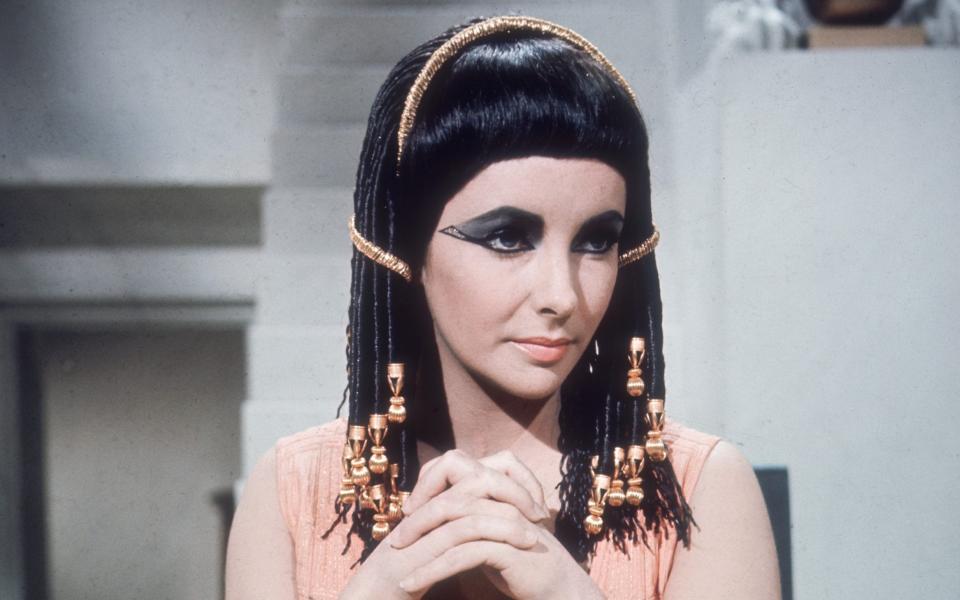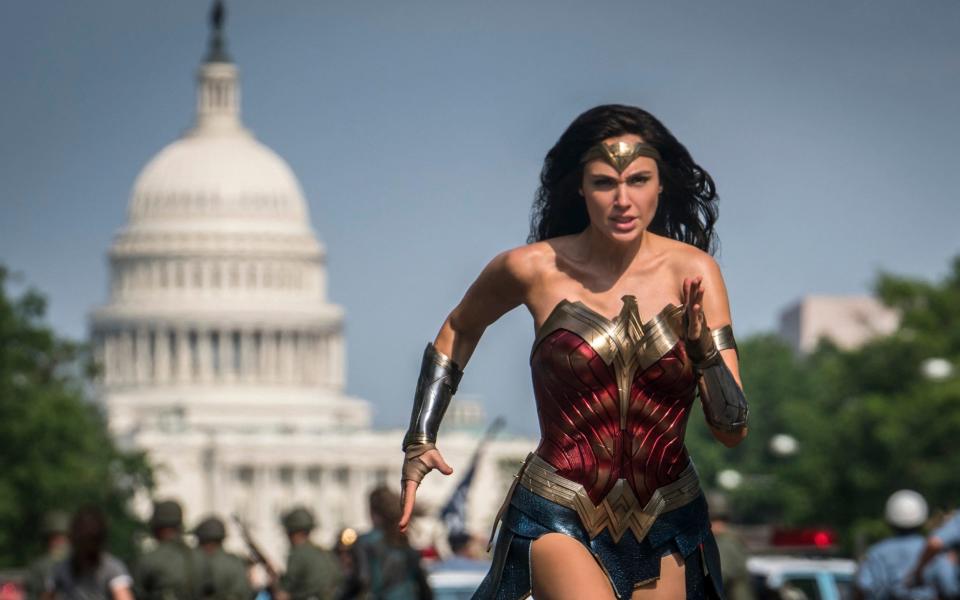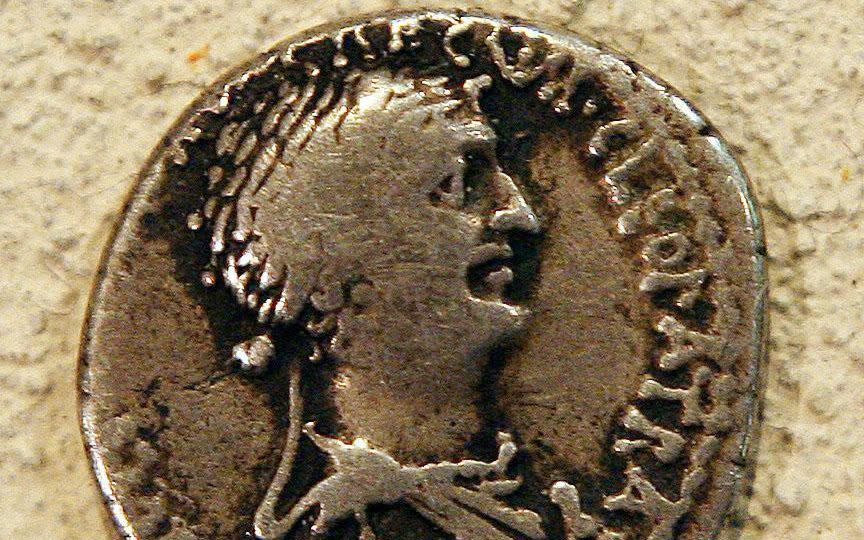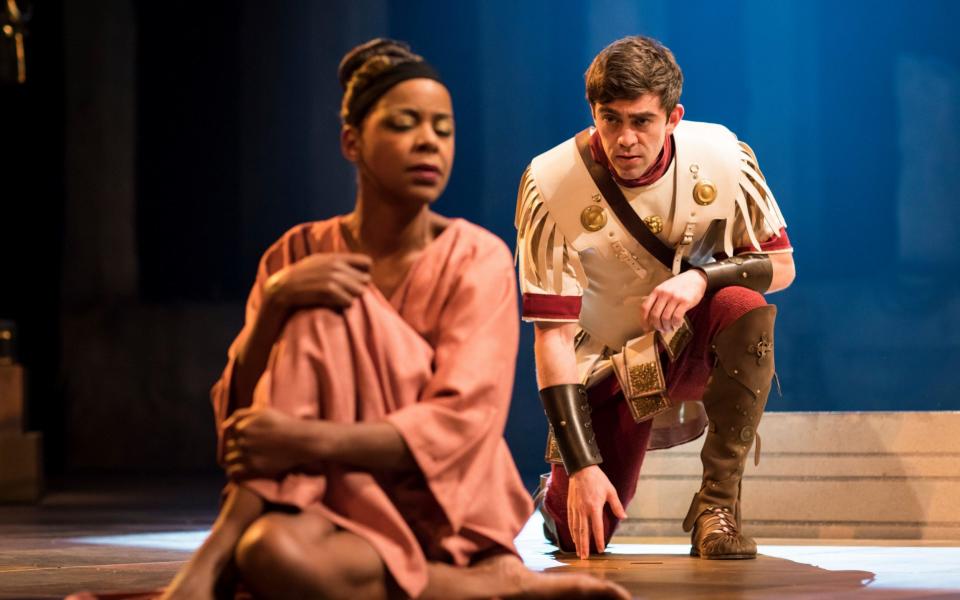Not Egyptian and no great beauty: what Gal Gadot's Cleopatra should look like, according to history
- Oops!Something went wrong.Please try again later.
- Oops!Something went wrong.Please try again later.
Half a century after a black-kohled, gold-braided Elizabeth Taylor became the modern world’s reference taste for Cleopatra, another Hollywood actress has turned her attention to the legendary queen of the Nile. This morning, Gal Gadot, the 35-year-old Israeli best known for her role in Wonder Woman, announced her collaboration with Wonder Woman director Patty Jenkins and Shutter Island screenwriter Laeta Kalogridis, with the intriguing promise “to bring the story of Cleopatra, Queen of Egypt, to the big screen in a way she’s never been seen before... To tell her story for the first time through women's eyes.”
So what should we expect? The all-female team at the helm and Gadot’s emphasis on the female gaze suggests that the film will cast a sceptical eye over the mythology surrounding one of the most famous women in history. It is a mythology that has been constructed over millennia by a succession of male writers -- Plutarch, Shakespeare, George Bernard Shaw -- based on fairly flimsy evidence.

“The actual facts that we have about Cleopatra, the contemporary evidence, is pretty sparse,” says Toby Wilkinson, Professor of Egyptology and Deputy Vice Chancellor at the University of Lincoln.
“Most of what we have is other peoples’ views of her which were hugely coloured by their particular political stance and then the whole web of myths that grew up around her, which are of course more powerful in a sense than the few historical facts that we’ve got.”
No contemporary accounts of Cleopatra survive and none of those from which our traditional conceptions of her are drawn are considered particularly objective. Cleopatra as we remember her today -- an Egyptian queen, an astonishing beauty, a great seducer of men, a tragic figure who took her own life with a snake -- proves to be more fiction than history.

How astonishingly little we actually know about the woman who inspired the myth of Cleopatra was immediately brought into focus on social media by the news that Gadot, a white actress, would be playing an Egyptian monarch. Some outraged commentators accused her of white-washing:
So confused how Gal Gadot is cast as #Cleopatra what a joke. Can they at least use an Egyptian actress???
— Fifi but 🎃spooky🎃 (@ssanfifi) October 11, 2020
Others were quick to ridicule such accusations but the assumption that Cleopatra was Egyptian is understandable. The ruling dynasty of which she was a member styled themselves as Egyptian on public monuments, hence the persistent surviving image of Cleopatra in Egyptian dress (and the Taylor look). But they were in fact foreign invaders who strictly maintained the ethnic integrity of their own line - up to and including frequent incestuous marriages. According to her most recent biographer, Stacy Schiff, ethnically Cleopatra was “approximately as Egyptian as Elizabeth Taylor.”
The dynasty of which she was a member was actually from Macedonia, a powerful state on the fringes of what we now call Ancient Greece. Alexander the Great, who invaded Egypt and overthrew its Persian rulers in 332 BC, was born there. In the power struggle following Alexander’s death, one of his most powerful generals, Ptolemy, seized Alexandria and declared himself Pharaoh. His descendants ruled there for the next three centuries -- Cleopatra was the last of the line.
“There wasn’t really a concept of being Greek at that point. The Ptolemies would have identified themselves very strongly with their Macedonian homeland,” says Wilkinson.
We have very little idea what Macedonians looked like. “They probably wouldn’t have looked much like the modern Greeks,” says Wilkinson. Is Gal Gadot white washing Cleopatra? We will most likely never know.
y’all do know cleopatra was white, right? pic.twitter.com/vbKFMlMsxB
— agapé 🇷🇼 (@agapethamar) October 12, 2020
Potentially a bigger problem for historical accuracy posed by Gadot’s casting is her beauty. For centuries, Cleopatra’s reputation as an astonishing beauty has been maintained but its provenance is dodgy at best. The legend seems to have originated with the Roman historian Cassius Dio, who declared her “a woman of surpassing beauty.” But Dio was born nearly two hundred years after Cleopatra’s death and his account of her appearance seems to have been motivated more by political considerations than anything relating to her actual appearance.
Cleopatra inherited a dynasty well on the way to calamity. The Roman Empire had turned its sights towards the fantastically wealthy corner of Africa on its doorstep and her father Ptolemy XII had been forced to effectively mortgage Egypt for the pay-offs necessary to keep the Romans at bay. When Cleopatra took the throne, at the age of 21, the imperative to fend off the Romans had only increased.
“What does a woman ruler in that position do? What cards does she have left to play?” poses Wilkinson, in explaining the tactics behind Cleopatra’s famous love affairs with two different Roman rulers: first Julius Caesar, then Mark Anthony. (Curiously, because she had children with both men, this extraordinary fact is one of the few pieces of Cleopatra’s personal history whose truth we can be sure of.)

It was Cleopatra’s relationship with Mark Anthony that made early historical accounts of her life so susceptible to political motivation. Cleopatra sided with Anthony in the civil war between the three Triumvirs who ruled the empire after Caesar, which resulted in both their deaths, Rome’s defeat of Egypt and Octavius Caesar’s accession to emperor in 27 BC.
The Roman historians who wrote the first accounts of Cleopatra were therefore writing from the other side of history.
“It served their purposes either to belittle or to exoticise Egypt in order to bolster the Roman claim and Roman triumph in having conquered Egypt,” says Wilkinson. “You never get an unbiased account of Cleopatra.”
For instance, it suited Dio to portray her as a great beauty because it fitted into his broader construction of Anthony as enslaved to a seductive sexual temptress. The image simultaneously emasculated Anthony and cast him as a traitor, in thrall to Egypt, not Rome. Hence Dio’s account of Cleopatra as scheming and sexually voracious.
But the closer to anyone who actually saw Cleopatra we get, the flimsier the idea that she was a great beauty seems to look.
“All we’ve got to go on are some statues which are inevitably idealising and coinage, which is probably more accurate, which shows her with a very pronounced aquiline nose and a pointed chin. She does not look what we would consider to be beautiful in twenty-first century aesthetics” comments Wilkinson, diplomatically.
The closest to contemporary written account of Cleopatra’s appearance that we have comes from the Roman historian Plutarch, who has this to say: “her beauty, as we are told, was in itself not altogether incomparable, nor such as to strike those who saw her.”

“She was considered powerful and of course that brings its own attraction,” says Wilkinson.
“Why did Julius Caesar sail up the Nile with Cleopatra? Not necessarily because she was beautiful in a conventional sense but because she held the keys to Egypt. That was what made her alluring.”
If Gadot and her team are striving to create an impartial and truthful account of Cleopatra’s life, untainted by political distortions and historical gaps, it will be a very short film.
“The idea that you can do a film of Cleopatra that is somehow ‘accurate’... I mean, whose accuracy? Whose version of the truth are you following?” says Wilkinson.
If she can erode a few of the myths layered onto Cleopatra by Roman writers, even at the cost of replacing them with another set of half-truths, Gadot will have done something to extricate Cleopatra from the male gaze. But it will be interesting to see how an actress who so exemplifies the beauty ideals of “twenty-first century aesthetics” can challenge the myth of Cleopatra's beauty.
A World Beneath the Sands: Adventurers and Archaeologists in the Golden Age of Egyptology by Toby Wilkinson is published by Picador on October 15

